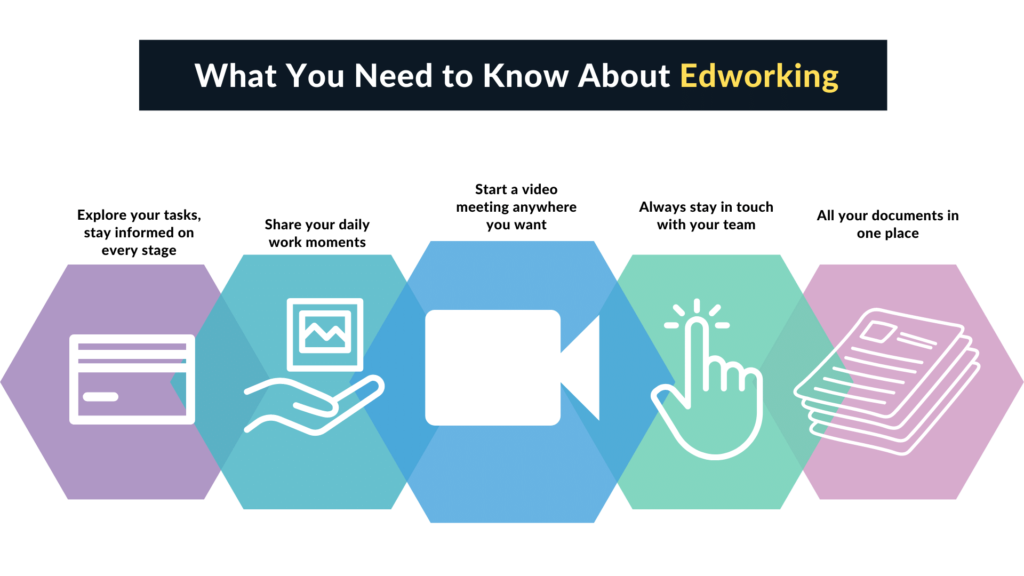In the ever-evolving landscape of sales, mastering the art of closing deals is akin to navigating a complex maze, with each turn presenting new challenges and opportunities. Amidst this complexity, sales methodologies serve as the compass guiding sales professionals toward their ultimate goal: making a sale. Among these methodologies, one stands out for its simplicity, time-tested effectiveness, and adaptability to the modern sales process. This methodology is BANT.
BANT—an acronym for Budget, Authority, Need, and Timeline—is a framework that has been empowering sales teams to qualify leads more efficiently for decades. Originally developed by IBM, one of the pioneering giants in the technology and sales industry, BANT's brilliance lies in its straightforward approach. It cuts through the noise to identify leads that are not just interested but are genuinely capable of purchasing. In essence, BANT helps sales professionals focus their energy and resources on prospects that are most likely to convert, ensuring that the sales process is both efficient and effective.

As we delve deeper into the nuances of BANT, it's crucial to understand that its relevance extends far beyond its initial application in the technology sector. Today, BANT is utilized across various industries, proving its versatility and enduring value. This article will explore the foundational elements of BANT, its importance in the contemporary sales environment, and practical tips for implementing this timeless methodology in your sales strategy. Whether you're a seasoned sales veteran or a newcomer to the field, understanding BANT is a step toward mastering the art of the sale.
 Understanding BANT in Sales
Understanding BANT in Sales
The Origin of BANT
The BANT framework, a cornerstone in sales methodologies, was conceived in the mid-20th century by IBM, a company synonymous with innovation in the realms of technology and business processes. In an era where the sales landscape was undergoing rapid transformation, IBM sought a method that could not only streamline the sales process but also increase its efficiency and efficacy. The result was BANT, a simple yet powerful framework that revolutionized the way sales professionals approached lead qualification.
IBM's development of BANT was driven by the need for a standardized method to assess the potential of leads across diverse markets and sectors. The genius of BANT lies in its universality and adaptability, allowing it to endure through decades of changing business environments and sales paradigms. It offered a clear, concise method to quickly evaluate a lead's viability, saving time and resources by focusing efforts on those with the highest potential for conversion.
Breaking Down BANT
Budget
The first component, Budget, addresses the financial capacity of a lead to make a purchase. It is paramount in determining whether a prospect can afford the product or service being offered. This step prevents the common pitfall of investing significant time and effort in leads that, regardless of their interest or need, simply do not have the necessary funds. Understanding a prospect's budget early on enables sales professionals to tailor their proposals accordingly, ensuring that solutions are not only effective but also financially viable for the client.
Authority
Authority refers to identifying who in the organization has the power to make purchasing decisions. In many cases, the person you initially contact may not be the decision-maker. Spending time convincing someone without the authority to buy can lead to frustrating dead ends. Recognizing the right individuals to engage with is crucial for progressing through the sales cycle efficiently. It involves understanding the organizational hierarchy and navigating through it to reach the stakeholders who can say "yes" to a deal.
Need
At the heart of every sale is a Need. This element explores the specific problems or challenges that the prospect is facing, which your product or service can solve. A deep understanding of the need allows for a more personalized and compelling sales pitch, demonstrating clearly how the offering addresses the prospect's pain points. It’s about connecting the dots between what you sell and why they should buy it, laying the foundation for a solution that feels tailor-made.
Timeline
Lastly, Timeline assesses the urgency of the prospect's need. It answers the question, "How soon does the solution need to be implemented?" A short timeline indicates a high level of urgency and a lead that is more likely to close quickly. Conversely, a longer timeline might suggest the need for sustained engagement, nurturing the lead through the sales funnel over time. Understanding the timeline helps in prioritizing efforts and aligning the sales strategy with the prospect's expectations.
Together, these four components form the backbone of the BANT framework, offering a systematic approach to lead qualification that is as relevant today as it was when first introduced by IBM. By breaking down BANT, sales professionals can gain a comprehensive understanding of their prospects, enabling them to focus their efforts where they are most likely to yield success.
 The Importance of BANT in Modern Sales Processes
The Importance of BANT in Modern Sales Processes

Why BANT Remains Relevant
In an era where the digital landscape has significantly altered consumer behavior and expectations, sales methodologies must evolve to stay effective. Despite its origins in a markedly different sales era, the BANT framework has demonstrated remarkable adaptability, retaining its relevance and utility. This endurance can be attributed to its inherent flexibility and focus on the fundamental aspects of the sales qualification process.
The adaptability of BANT lies in its ability to be applied across industries, sales models, and customer types. Whether it’s a complex B2B solution sale or a straightforward B2C product, BANT’s core principles remain applicable. It encourages sales professionals to dive deep into understanding the prospective buyer's context, enabling the customization of sales approaches to fit the unique needs and challenges of each lead.
Moreover, BANT fosters efficiency in sales qualification. By swiftly identifying leads that do not meet the basic criteria for a potential sale, sales teams can allocate their time and resources more effectively. This efficiency is crucial in modern sales environments, where the volume of leads can be overwhelming due to the reach of digital marketing. BANT acts as a filter, ensuring that effort is concentrated on leads with genuine potential, thus optimizing the sales funnel and improving conversion rates.
How BANT Enhances Sales Strategies
The implementation of BANT within a sales strategy introduces a systematic approach to lead qualification, streamlining the sales process in several ways. Firstly, it ensures that sales conversations are structured and focused. Sales representatives armed with BANT criteria can conduct more pointed and productive discussions, quickly identifying key information that signals a lead’s viability.
Furthermore, BANT enriches sales strategies by enhancing the alignment between sales and marketing teams. Marketing efforts can be tailored to generate leads that meet BANT criteria, thereby improving the quality of leads entering the sales funnel. This alignment is crucial for efficient lead management and helps in optimizing marketing ROI.
BANT also empowers sales teams to personalize their sales pitches and proposals more effectively. By understanding the specific budget, authority, needs, and timeline of each prospect, sales professionals can craft their messages to address these points directly. This level of personalization is not only more likely to resonate with potential buyers but also demonstrates a deep understanding of their challenges and constraints, building trust and credibility.
In essence, BANT enhances sales strategies by injecting clarity, focus, and efficiency into the lead qualification process. It provides a structured approach that aligns with modern sales and marketing dynamics, ensuring that sales efforts are concentrated on the most promising opportunities. As sales landscapes continue to evolve, the principles underpinning BANT will remain vital tools for sales professionals seeking to navigate the complexities of the modern market effectively.

 Implementing BANT in Your Sales Strategy
Implementing BANT in Your Sales Strategy

Practical Steps to Apply BANT
Implementing the BANT framework within your sales strategy requires a methodical approach, starting with identifying and engaging decision-makers, and accurately assessing budget and timeline constraints. These steps are essential to ensuring that your sales efforts are directed towards leads with the highest potential for conversion.
Identifying and Engaging Decision-Makers
The first step in applying BANT is to ensure you're talking to the right people. Authority within an organization is not always transparent, and it can sometimes be challenging to pinpoint who has the final say in purchasing decisions. Utilize LinkedIn and other professional networks to research and map the organizational structure of your prospect's company. Engaging in social selling and participating in industry forums can also help in identifying key stakeholders. Once identified, craft personalized outreach strategies that resonate with the specific pain points and business goals of these decision-makers. Tailoring your communication to address their unique challenges and objectives can significantly increase your chances of engaging them effectively.
Assessing Budget and Timeline Constraints
Understanding a prospect's budget and timeline early in the sales process is crucial for qualifying leads. To assess the budget, ask open-ended questions that encourage prospects to reveal not just the monetary constraints but also the value they place on solving their problem. This can provide insights into their willingness to invest in a solution. When discussing timelines, strive to understand the factors driving their schedule. Is there an event or a business cycle influencing their urgency? Knowing this helps you align your solution with their time-sensitive needs, demonstrating empathy and a commitment to providing value.
Common Challenges and Solutions
Overcoming Objections and Barriers
Even with a thorough understanding of BANT, sales professionals will encounter objections and barriers. A common challenge is prospects who are hesitant to disclose budget information early in the conversation. To navigate this, emphasize the value of transparency in finding the most effective solution within their financial constraints. Share examples of how your product or service has provided ROI for similar clients, making it clear that understanding their budget helps in customizing the best possible solution.
Another frequent obstacle is accessing and influencing the true decision-makers. When faced with gatekeepers or indirect contacts, leverage the value proposition of your offering as a tool to gain access. Illustrate how your solution addresses not only the immediate needs of the contact but also aligns with the broader objectives of the organization. Offering to conduct a no-obligation assessment or demo can also serve as an incentive for them to involve higher authority figures in the conversation.
In dealing with timeline constraints, be prepared to show flexibility. If a prospect is not ready to commit, establish a follow-up strategy that keeps the lines of communication open, providing value through insights and industry updates in the interim. This approach builds credibility and keeps you top-of-mind when the time to purchase approaches.
 BANT and Technology: A Synergistic Relationship
BANT and Technology: A Synergistic Relationship

Tools and Platforms That Support BANT Methodology
The integration of technology in sales processes has transformed the way BANT methodology is applied, making it more dynamic and insightful. At the forefront of this transformation are Customer Relationship Management (CRM) systems and analytics tools, which have become indispensable for sales teams utilizing the BANT framework.
CRM systems are the backbone of modern sales strategies, providing a centralized platform for tracking interactions with prospects and customers. These systems support the BANT methodology by offering features that help in identifying and managing leads based on their Budget, Authority, Need, and Timeline. For instance, CRM software allows sales professionals to segment leads according to these criteria, enabling targeted communication strategies that align with each segment's characteristics. Additionally, CRM tools can track the progress of leads through the sales funnel, offering visibility into which prospects meet BANT criteria at any stage of the sales process.
Analytics tools complement CRM systems by providing data-driven insights into the behavior and preferences of prospects. These tools can analyze large volumes of data to identify trends and patterns, such as the common budget ranges of leads that convert or the typical timeline from initial contact to purchase. This information empowers sales teams to refine their BANT criteria, making their lead qualification process more accurate and efficient.
The Role of AI and Machine Learning
The advent of Artificial Intelligence (AI) and Machine Learning (ML) technologies has further enhanced the capability of sales teams to implement BANT effectively. These technologies enable predictive analytics, a game-changer in identifying qualified leads.
Predictive analytics uses historical data and AI algorithms to forecast future behaviors, trends, and outcomes. In the context of BANT, predictive analytics can assess a lead's likelihood of becoming a customer based on their Budget, Authority, Need, and Timeline, even before these have been explicitly identified. For example, machine learning models can analyze past successful sales to identify patterns in the data that correlate with a high probability of conversion. These patterns might include specific industries that frequently have the budget for your offerings, job titles that typically hold decision-making authority, or particular business challenges that your product or service addresses effectively.
Furthermore, AI-driven tools can automate the process of gathering information related to BANT criteria, such as scanning public databases and social media to gauge a company's investment capabilities (Budget) or identifying decision-makers (Authority) within an organization. This automation not only speeds up the lead qualification process but also allows sales professionals to focus their efforts on personalizing their approach to highly qualified leads.
The synergistic relationship between BANT and technology, particularly through CRM systems, analytics tools, and AI/ML advancements, has made the BANT methodology more powerful and applicable in today’s digital sales environment. By leveraging these technological tools, sales teams can apply BANT with greater precision and efficiency, leading to better sales outcomes and a more streamlined sales process.
 BANT in Edworking
BANT in Edworking
In the realm of remote work and digital collaboration, Edworking emerges as a pivotal platform that not only facilitates seamless interaction among team members but also significantly enhances the sales process. This is where the time-honored BANT methodology finds a new lease on life, leveraging Edworking’s suite of tools to refine and expedite the sales cycle.
Edworking is a comprehensive platform designed to streamline project management, team collaboration, and communication. It offers a range of features, from task assignments and progress tracking to direct messaging and file sharing, all of which are crucial for maintaining the flow of information within a sales team. The relevance of BANT in this context is profound, as Edworking provides the infrastructure necessary to apply BANT criteria efficiently in the sales process.
One of the key challenges in implementing BANT is maintaining clear and organized communication about a prospect's Budget, Authority, Need, and Timeline. Edworking addresses this challenge head-on with tools that facilitate real-time communication and collaboration. Sales teams can use Edworking to document and share insights about potential clients, ensuring that everyone involved in the sales process has access to the latest information. This capability is crucial for accurately assessing and engaging leads according to BANT criteria.

Moreover, Edworking's tools for project and task management can be leveraged to track the progress of leads through the sales funnel. Tasks can be assigned to follow up with leads that meet specific BANT criteria, and milestones can be set to ensure timely engagement based on the prospect’s timeline. This structured approach to lead management ensures that no opportunity slips through the cracks.
To enhance communication and management further, Edworking offers unique resources such as:
- Edworking's Paragraph Typing Test: A tool that can help sales professionals improve their typing speed and accuracy, enabling them to respond to prospects more efficiently and effectively.
- Edworking's Communication Style Quiz: This quiz can help sales team members identify their communication strengths and areas for improvement, fostering better interactions with prospects and within the team.
- Edworking's Management Aptitude Test: A resource for sales managers to assess their management skills, crucial for leading a sales team successfully and ensuring the effective application of the BANT methodology.
Additionally, Edworking’s free AI Writing and Social media tools can support sales and marketing teams in creating compelling, targeted content that resonates with leads at different stages of the BANT qualification process.
By integrating BANT with Edworking’s versatile platform, sales teams can not only streamline their lead qualification process but also enhance their communication and management capabilities, ensuring a more dynamic, efficient, and effective sales strategy in today’s digital age.

 Conclusion
Conclusion
The BANT framework stands as a testament to the enduring principles of effective sales qualification, despite the evolution of sales methodologies over the decades. Originating from IBM's strategic approach to sales, BANT—emphasizing Budget, Authority, Need, and Timeline—provides a straightforward yet profound method for identifying and engaging potential clients. Its simplicity and adaptability have ensured its relevance across various industries and sales environments, even in today's digital and fast-paced market.
We've delved into the essence of BANT, breaking down its components to understand their individual and collective importance in the sales process. Budget and Authority help in pinpointing financially capable and decision-making prospects, while Need and Timeline align sales efforts with the prospect's requirements and urgency. This alignment not only optimizes resource allocation but also enhances the efficiency and effectiveness of sales strategies.
The integration of technology, particularly through CRM systems, analytics tools, and AI, has magnified the impact of BANT, enabling sales teams to apply these criteria with greater precision and at scale. These technological advancements facilitate a more dynamic application of BANT, leveraging data-driven insights and automation to refine lead qualification and engagement processes.
Incorporating BANT within Edworking’s collaborative and management platform demonstrates the framework's flexibility and its compatibility with modern sales tools. Edworking enhances the application of BANT by providing a structured and efficient environment for communication and task management, ensuring that sales teams can apply the BANT criteria cohesively and effectively.
The adoption of BANT in your sales strategy is not just a nod to a time-tested methodology but a strategic move towards a more focused, efficient, and effective sales process. BANT's principles, augmented by today’s technological capabilities and platforms like Edworking, can significantly enhance your team's ability to qualify leads accurately, engage decision-makers effectively, and close deals successfully.
Embrace BANT in your sales strategy and witness a transformation in how your sales team identifies, qualifies, and converts leads. The journey from prospect to client can be complex, but with BANT, you have a compass that guides your efforts towards those opportunities most worth pursuing. Let the principles of BANT, combined with the power of modern technology and collaboration tools, propel your sales strategy to new heights of success.





